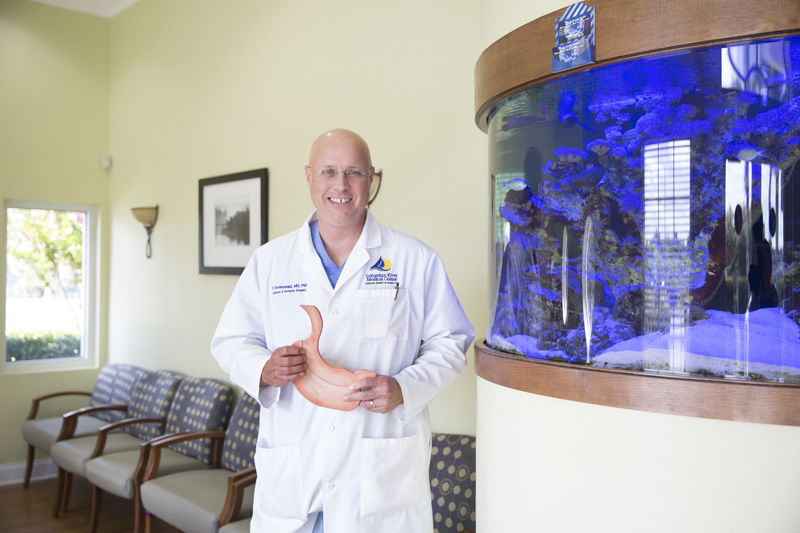For millions of Americans, trying to lose weight is an annoying and seemingly never-ending roller coaster ride that – in the end – often gets them nowhere.
It can be one heck of an expensive ride, too.
Marketdata Enterprises, a research firm specializing in consumer spending habits, says Americans currently shell out more than $60 billion a year trying to lose weight.
Sadly, most of those dollars are lost. Most often the weight is not.
Worse, the Federal Trade Commission’s consumer fraud division says, “More consumers fall prey to fraudulent weight-loss products than any other fraud.”
Dr. Patrick Domkowski of the Riverside Surgical & Weight Loss Center, and chief of surgery at the Sebastian River Medical Center, is all too aware of the weight-loss challenges his patients face.
A graduate of Georgetown University Medical School, Domkowski served his internship, fellowship and residency at Duke University. He is quick to point out weight loss can be far more complicated than many people realize.
Fortunately, the Food and Drug Administration gave its stamp of approval to a relatively new, non-surgical approach to weight loss called “the gastric balloon” and it is already showing impressive results nationwide.
It’s a simple concept.
A silastic or silicone rubber balloon is inserted by endoscope (no surgical incisions are made) down the throat and into the stomach and filled with a saline solution.
According to the FDA, the balloon does its work by “occupying space in the stomach,” which triggers a feeling of “fullness” so the patient doesn’t experience food cravings or eat to excess.
The device doesn’t change the stomach’s natural anatomy, the FDA says, but rather it allows patients to lose weight and – more importantly – keep that weight off after the balloon is removed by following a medically supervised diet and exercise plan.
The director of the office of device evaluation at the FDA, Dr. William Maisel, says, “This new balloon device provides doctors and patients with a new non-surgical option that can be quickly implanted, is non-permanent, and can be easily removed.”
Domkowski elaborates by explaining, “The balloon treats overweight folks who have an interest in losing somewhere between 30 and 50 pounds. It does not treat metabolic disease and it’s temporary. It can stay [inside the stomach] only for six months.”
The procedure itself is done on an outpatient basis. That said, the straight-shooting Domkowski is quick to add that patients don’t just walk in one day and walk out many pounds lighter.
And, unlike the “gastric sleeve” procedures Domkowski and his surgical partner, Dr. Jason Radecke, also perform, the balloon procedure is not meant to combat diabetes or other metabolic conditions.
The people that could benefit from this are typically females, because “nine out of our 10 patients are females who want to lose about 40 pounds and have had trouble with dieting and want to try something a bit more aggressive … but not surgical.
“I think it’s an interesting new technology that offers something for people that want to lose a moderate amount of weight and want to be a little bit more aggressive than conventional dieting, but still are not ready for [gastric bypass] surgery. The data has shown it’s been beneficial for folks that fit that category.”
Success with the approach takes commitment and a team of medical experts, including surgeons such as Domkowski or Radecke, dietitians and sometimes psychologists. Together they work intensively with patients both before and after the procedure in order to achieve the desired long-lasting results.
“During that six months the balloon is in, you have regular follow-ups and meetings with our team,” Domkowski says. “The lifestyle changes patients make during that time will last. They will be real lifestyle changes rather than an ‘I’m on a diet’ mindset.”
Dr. Patrick Domkowski is at Riverside Surgical & Weight Loss Center at and is the surgical chief at Sebastian River Medical Center. His office is at 14430 U.S. Hwy. 1 in Sebastian. The phone is 772-581-8003.

